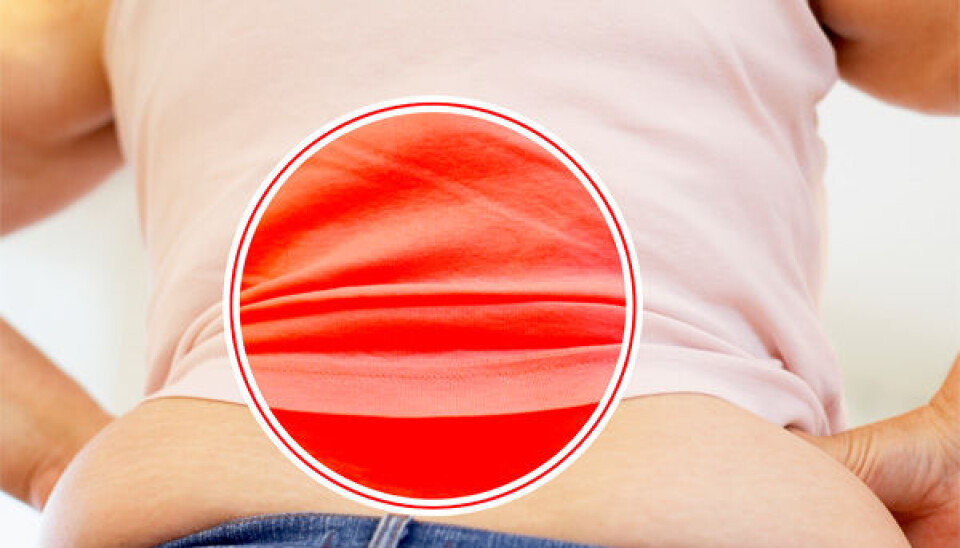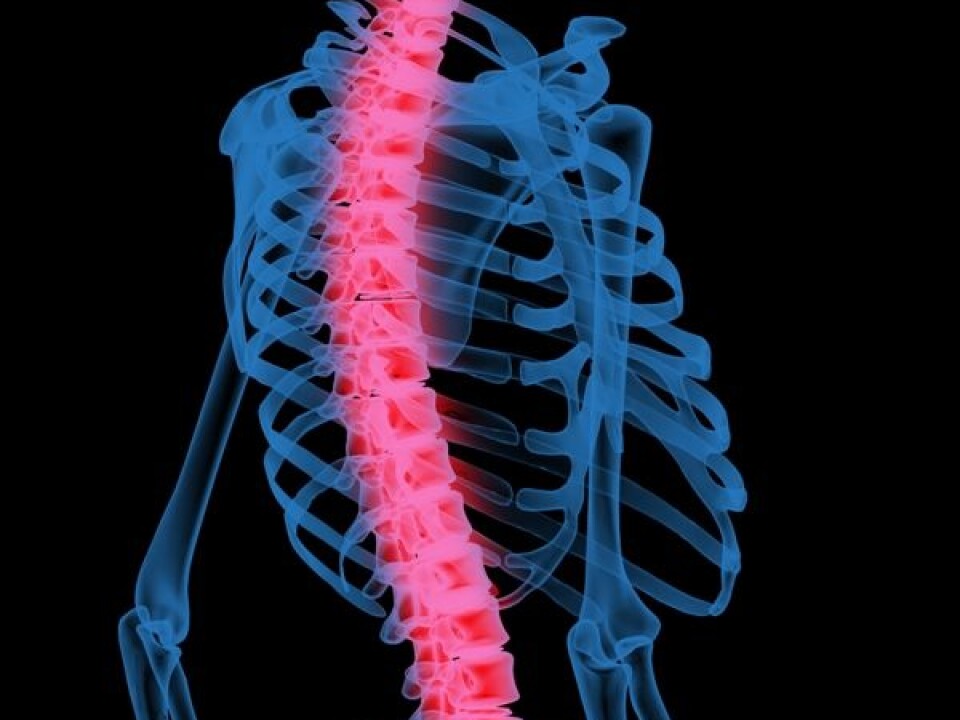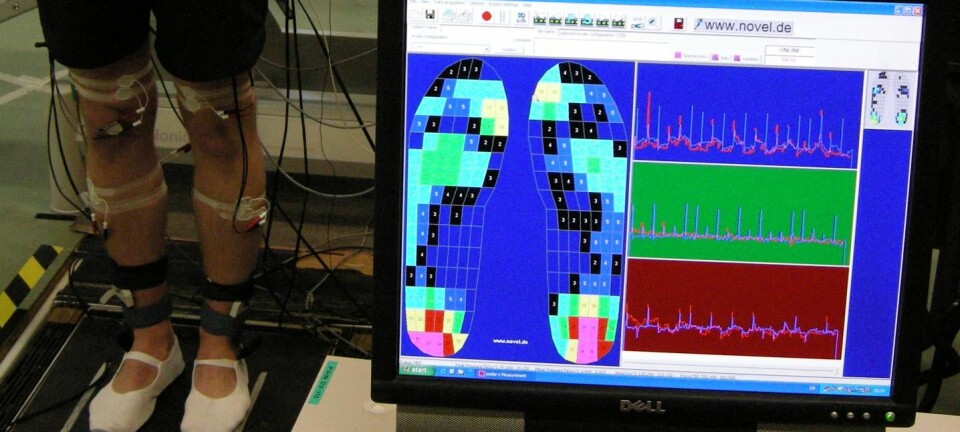
Backs get strained by overweight
Overweight women have a 60 per cent higher risk of chronic lower back pain. If the general population gets heavier, this will cause an increase in disabilities.
Denne artikkelen er over ti år gammel og kan inneholde utdatert informasjon.
A cross-sectional study of 30,000 men and 33,000 women in Norway has revealed a clear connection between high body mass indexes (BMIs) and lumbar region (lower back) pain. This has also been confirmed in an 11-year follow-up study.
Heavy women are hardest hit.
“Women are generally more susceptible to lumbar pains than men. The link between a high BMI and chronic lower back pains is very clear in our material, says Ingrid Heuch, who is a chief physician at the Department of Neurology, Oslo University Hospital.
Heuch explains that women who have body mass indexes over 35 have about a 60 percent bigger risk of suffering these pains than women with normal weights.

Heuch gave her doctoral dissertation about this subject on 22 March, and based her study on data from a major health investigation (HUNT) in North Trøndelag County.
Loads and cholesterol
Numerous explanations can be made for the strong link between BMI and lumbar region pain.
According to Heuch, heavy body puts a mechanical strain on the spine. So backs suffer when the weight load increases. Increased weight can also affect spinal discs.
Fat deposits on the interior of blood vessels can reduce the supply of blood to the lumbar region and increase lower back pain too.
The researcher has also found that persons with high values of the “good” cholesterol HDL have less risk of lumbar pain than those with a lot of the “poor” kind of cholesterol, triglycerides.
These are the same factors that impact cardiovascular diseases.
Muscles versus fat
Weight gain isn’t just a cause of increased lower back pain risk among women – it concerns men too.
A man in North Trøndelag County with a BMI exceeding 35 still encounters “only” a 30 per cent larger risk of chronic lower back pains.
Heuch has no clear explanation for this difference between women and men, but one factor may be that muscular men are influencing statistics.
BMI is measured by height and weight and doesn’t discern between fat and muscles – and more of men’s weight can be in muscle rather than fat.
Scientists think hormonal differences might also factor in.
Heuch suggests another consideration: Women could on average be more likely to report their pains than men are.
Physical labour doesn’t help
It should come as no surprise that researchers have found physical activity and exercise helps ward off chronic lower back pain.
But strangely this only involves leisure time physical activity – not physical activity during working hours.
“Our findings indicate that people who do physical labour, on the contrary, suffer more lumbar region pain than those with physically inactive jobs,” says the researcher.
Increased weight – more absences from work
Upwards of 80 per cent of us suffer back pains at some period of our lives.
But in these studies chronic lower back pains are defined as chronic pains, ones that continue for at least three months in a row. Lumbar region pains are one of the most common causes of absences from work due to sickness as well as disability benefits in Norway.
“If the population’s average weight continues to rise, we have reason to believe that these problems will mount,” warns Heuch.
She hopes the study will contribute to more awareness and preventive initiatives to curb weight gains, and thus reduce lower back pains.
-------------------------
Read this article in Norwegian at forskning.no
Translated by: Glenn Ostling



































